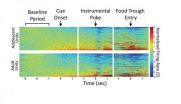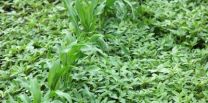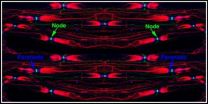(Press-News.org) New Rochelle, NY, January 26, 2011—An innovative genetic strategy for rendering T-cells resistant to HIV infection without affecting their normal growth and activity is described in a paper published in Human Gene Therapy, a peer-reviewed journal published by Mary Ann Liebert, Inc. (www.liebertpub.com). The paper is available free online at www.liebertpub.com/hum
A team of researchers from Japan, Korea, and the U.S. developed an anti-HIV gene therapy method in which a bacterial gene called mazF is transferred into CD4+ T-cells. The MazF protein is an enzyme (an mRNA interferase) that destroys gene transcripts, preventing protein synthesis. The design of this mazF gene therapy vector ensures that synthesis of the MazF protein is triggered by HIV infection. When HIV infects treated T lymphocytes, MazF is induced, blocking HIV replication and, essentially, making the T-cells HIV resistant.
This elegant gene therapy tool was developed by Hideto Chono and colleagues from Takara Bio Inc. (Otsu, Shiga, Japan), Seoul National University and ViroMed Co. (Seoul, Korea), National Institute of Biomedical Innovation (Tsukuba, Ibaraki, Japan), and Robert Wood Johnson Medical School (Piscataway, NJ). The authors describe the theory and science behind this strategy in the paper entitled, "Acquisition of HIV-1 Resistance in T Lymphocytes Using an ACA-Specific E. coli mRNA Interferase."
"The potential of using vectors to express genes within a cell to block viral infection was first considered by David Baltimore in a strategy called 'intracellular immunization.' This study illustrates a unique way in which intracellular immunization can be achieved," says James M. Wilson, MD, PhD, Editor-in-Chief, and Director of the Gene Therapy Program, Department of Pathology and Laboratory Medicine, University of Pennsylvania School of Medicine, Philadelphia.
INFORMATION:
Human Gene Therapy, the Official Journal of the European Society of Gene and Cell Therapy, British Society for Gene Therapy, French Society of Cell and Gene Therapy, German Society of Gene Therapy, and five other gene therapy societies is an authoritative peer-reviewed journal published monthly in print and online that presents reports on the transfer and expression of genes in mammals, including humans. Related topics include improvements in vector development, delivery systems, and animal models, particularly in the areas of cancer, heart disease, viral disease, genetic disease, and neurological disease, as well as ethical, legal, and regulatory issues related to the gene transfer in humans. Tables of content and a free sample issue may be viewed online at www.liebertpub.com/hum
Mary Ann Liebert, Inc. (www.liebertpub.com) is a privately held, fully integrated media company known for establishing authoritative peer-reviewed journals in many promising areas of science and biomedical research, including Tissue Engineering, Stem Cells and Development, and Cellular Reprogramming. Its biotechnology trade magazine, Genetic Engineering & Biotechnology News (GEN), was the first in its field and is today the industry's most widely read publication worldwide. A complete list of the firm's 60 journals, books, and newsmagazines is available at www.liebertpub.com.
Mary Ann Liebert, Inc. 140 Huguenot St., New Rochelle, NY 10801-5215 www.liebertpub.com Phone: (914) 740-2100 (800) M-LIEBERT Fax: (914) 740-2101
New anti-HIV gene therapy makes T-cells resistant to HIV infection
2011-01-27
ELSE PRESS RELEASES FROM THIS DATE:
Pitt team finds teen brains over-process rewards, suggesting root of risky behavior, mental ills
2011-01-27
PITTSBURGH—University of Pittsburgh researchers have recorded neuron activity in adolescent rat brains that could reveal the biological root of the teenage propensity to consider rewards over consequences and explain why adolescents are more vulnerable to drug addiction, behavioral disorders, and other psychological ills.
The team reports in the Journal of Neuroscience that electrode recordings of adult and adolescent brain-cell activity during the performance of a reward-driven task show that adolescent brains react to rewards with far greater excitement than adult brains. ...
Sharing child caregiving may increase parental conflict, study finds
2011-01-27
COLUMBUS, Ohio -- Parents who share caregiving for their preschool children may experience more conflict than those in which the mother is the primary caregiver, according to a new study.
Results showed that couples had a stronger, more supportive co-parenting relationship when the father spent more time playing with their child. But when the father participated more in caregiving, like preparing meals for the child or giving baths, the couples were more likely to display less supportive and more undermining co-parenting behavior toward each other.
The results were ...
Centuries of sailors weren't wrong: Looking at the horizon stabilizes posture
2011-01-27
Everybody who has been aboard a ship has heard the advice: if you feel unsteady, look at the horizon. For a study published in Psychological Science, a journal of the Association for Psychological Science, researchers measured how much people sway on land and at sea and found there's truth in that advice; people aboard a ship are steadier if they fix their eyes on the horizon.
Thomas A. Stoffregen of the University of Minnesota has been studying "body sway" for decades—how much people rock back and forth in different situations, and what this has to do with motion sickness. ...
Low socioeconomic status increases depression risk in rheumatoid arthritis patients
2011-01-27
A recent study confirmed that low socioeconomic status (SES) is associated with higher risk of depressive symptoms in patients with rheumatoid arthritis (RA). Statistically significant differences in race, public versus tertiary-care hospital, disability and medications were found between depressed and non-depressed patients. Study findings are reported in the February issue of Arthritis Care & Research, a journal published by Wiley-Blackwell on behalf of the American College of Rheumatology (ACR).
Roughly 1.3 million Americans are affected by RA—a chronic autoimmune ...
Waterhemp rears its ugly head ... again
2011-01-27
Waterhemp has done it again. University of Illinois researchers just published an article in Pest Management Science confirming that waterhemp is the first weed to evolve resistance to HPPD-inhibiting herbicides.
"A fifth example of resistance in one weed species is overwhelming evidence that resistance to virtually any herbicide used extensively on this species is possible," said Aaron Hager, U of I Extension weed specialist.
Waterhemp is not a weed species that can be adequately managed with one or two different herbicides, Hager said. This troublesome weed requires ...
Agave fuels global excitement as a bioenergy crop
2011-01-27
Scientists found that in 14 independent studies, the yields of two Agave species greatly exceeded the yields of other biofuel feedstocks, such as corn, soybean, sorghum, and wheat. Additionally, even more productive Agave species that have not yet been evaluated exist.
According to bioenergy analyst, Sarah Davis, "We need bioenergy crops that have a low risk of unintended land use change. Biomass from Agave can be harvested as a co-product of tequila production without additional land demands. Also, abandoned Agave plantations in Mexico and Africa that previously supported ...
The undead may influence biodiversity, greenhouse gas emissions
2011-01-27
EAST LANSING, Mich. — It's commonly known, at least among microbiologists, that microbes have an additional option to living or dying — dormancy.
Dormant microbes are less like zombies and more like hibernating bears. What isn't known, however, is how large numbers of dormant microorganisms affect the natural environments when they act as microbial seed banks. In the current issue of Nature Reviews: Microbiology, Jay Lennon, Michigan State University assistant professor of microbiology and molecular genetics, examines the cellular mechanisms that allow microbes to hibernate ...
RIC study suggests researchers are entering a new era of advances in brain research
2011-01-27
CHICAGO (January 26) – Scientists at The Rehabilitation Institute of Chicago (RIC), designated the "#1 Rehabilitation Hospital in America" by U.S. News & World Report since 1991, report that, thanks to improvements in technology and data analysis, our understanding of the functional principles that guide the development and operation of the brain could improve drastically in the next few years. The advances could herald a neuroscientific revolution, much as increasing processor speeds paved the way for the computing revolution of the last half century.
In the February, ...
Stimulating the brain's immune response may provide treatment for Alzheimer's disease
2011-01-27
A new target for the prevention of adverse immune responses identified as factors in the development of Alzheimer's disease (AD) has been discovered by researchers at the University of South Florida's Department of Psychiatry and the Center of Excellence for Aging and Brain Repair.
Their findings are published online in the Journal of Neuroscience (http://www.jneurosci.org/).
The CD45 molecule is a receptor on the surface of the brain's microglia cells, cells that support the brain's neurons and also participate in brain immune responses.
Previous studies by the ...
Membrane molecule keeps nerve impulses hopping
2011-01-27
CHAPEL HILL, N.C. -- New research from the University of North Carolina at Chapel Hill School of Medicine describes a key molecular mechanism in nerve fibers that ensures the rapid conductance of nervous system impulses. The findings appear online Jan. 27, 2011 in the journal Neuron.
Our hard-wired nerve fibers or axons rely on an insulating membrane sheath, the myelin, made up of fatty white matter to accelerate the rate of transmission of electrical impulses from the brain to other parts of the body.
Myelin thus acts to prevent electrical current from leaking or prematurely ...



